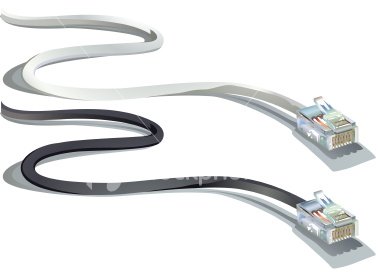
Pure Copper vs Copper Clad Data Cable: What You Need to Know
What are Pure Copper and Copper Clad Cables?
Pure Copper Cables
As the name suggests, pure copper cables are made entirely of copper. Known for its excellent electrical conductivity, pure copper is often the preferred choice for high-performance networks.
Copper-Clad Aluminum (CCA) Cables
CCA cables feature an aluminum core coated with a copper layer. This design aims to offer a compromise between copper's conductivity and aluminum's lightweight and cost-effectiveness.
Conductivity and Signal Strength
Pure Copper
Copper is known for its superior electrical conductivity. This reduces signal loss, making pure copper cables ideal for high-speed data transmission over longer distances.
Copper-Clad Aluminum
CCA cables don't offer the same level of conductivity as pure copper cables. The presence of aluminum means that these cables can experience higher signal loss, especially over extended distances.
Weight and Flexibility
Pure Copper
Being entirely made of copper, these cables are generally heavier and less flexible. While this isn't usually a problem in stationary installations, it might be a consideration for applications where the line needs to be moved frequently.
Copper-Clad Aluminum
CCA cables are lighter and more flexible due to their aluminum core. This makes installing them easier in tight spaces or areas where the cabling will be frequently rearranged.
Durability and Lifespan
Pure Copper
Pure copper cables are incredibly durable and can withstand various environmental conditions. They are less likely to break or deteriorate over time, making them a long-lasting option.
Copper-Clad Aluminum
The aluminum core in CCA cables is more prone to oxidation and is generally less durable than pure copper. This can result in a shorter lifespan and may require more frequent replacements.
Cost
Pure Copper
The primary downside of pure copper cables is their cost. Copper is a more expensive material, which can quickly add up for extensive networking projects.
Copper-Clad Aluminum
CCA cables are generally less expensive due to the aluminum core. For budget-conscious projects, they might seem like an attractive option.
Compliance and Standards
Pure Copper
Pure copper cables usually meet higher industry standards, including those set by organizations like the Telecommunications Industry Association (TIA) and the International Organization for Standardization (ISO).
Copper-Clad Aluminum
CCA cables may not meet some industry standards, particularly for specific high-performance applications. Always check the cable's compliance with your specific project's requirements.
Applications: Where Each Type Shines
Pure Copper
- High-speed networks
- Long-distance data transmission
- Industrial applications
- High-quality audio and video transmission
Copper-Clad Aluminum
- Short-distance runs
- Residential networking
- Light-duty applications
Choosing between pure copper and copper-clad aluminum cables depends on factors like required conductivity, flexibility, durability, cost, and compliance with industry standards. Pure copper cables are ideal for high-performance, long-lasting installations, while copper-clad lines may be suitable for shorter runs and budget-friendly projects.
Before making a decision, consider your specific needs and consult with a professional to ensure you're choosing the right cable type for your application.
Progressive Office Cabling
Founded in 1986, Progressive Office's success is a direct result of years of commitment to seeking cost-effective solutions. Progressive teams are committed to installing and operating your data cabling, access control, and telecom systems while minimizing disruption and downtime. Call our toll-free number (800) 614-4560 today.


 As discussed in Part 1, 2018 is turning into a year with several exciting emerging
As discussed in Part 1, 2018 is turning into a year with several exciting emerging 
 Data volume has grown extensively. Also, the processing capacity to users continues to get grow. Specialists in
Data volume has grown extensively. Also, the processing capacity to users continues to get grow. Specialists in 
 As the price of Cat6 cable has come down, the answer is yes. You get 500% more speed for about a 25% higher price. Unless you really just don't need more speed, go with Cat6.
As the price of Cat6 cable has come down, the answer is yes. You get 500% more speed for about a 25% higher price. Unless you really just don't need more speed, go with Cat6.




 Category 5e and Cat6 Cable
Category 5e and Cat6 Cable